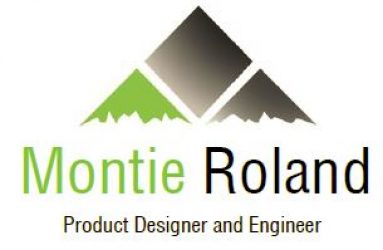10 years ago, the push was to go paperless. Is paperless too much of a good thing?
Data in your computer is passive. Yes you can manipulate it, share, mine it but you have to go ask for it. Why not make data active?
Lean Manufacturing techniques include tools to make your data active but getting it out in from of your employees and managers on daily basis. Put that data in front of your team an understandable and actionable format where it does the most good, i.e. right in front of them.
Lets explore the various facets of active vs. passive data. Comments and suggestions are welcome here or at montie@montie.com
Cheers,
Montie
Here is the transcription from the podcast………………………………………………..
Audio file: 2015 May 17 – Lean Thoughts 1 – Active vs. Passive Data.mp3
Time transcribed: 12:29 minutes
[Opening music]
Hi. My name is Montie Roland. I’m with Montie Gear in Apex, North Carolina.
What I wanted to do is to share some thoughts with you today and have at least a one-way dialogue – it could become two, if you email me – about the difference between passive and active information. So I’d like to spend a few minutes talking about that. And maybe define it and have some examples.
One of the things that’s happened over the past twenty years is that we’ve had this head-long rush to get everything on the computer. So, we assumed that getting it on the computer is more efficient; is more cost-effective; is safer because you can back it up. And so we’ve created database after database after database. And one of the joys and the beauties of – and potentially harm – of doing this is that everybody can have access to information, without having to go down the hallway and grab something from a file cabinet. Now, of course, the horror is that can be hacked. Someone can get into that from across the world. Whereas, a file cabinet, you’ve got to physically be there to get into it. Now, a file cabinet can be broken into as well, but someone on the other side of the globe isn’t going to be able to do that without visiting here. So, we’ve created this electronic database that contains what we do. And the beauty of it is that everyone in your company can sit down, and if they have the right software and they have the access, they can read that data. The problem is that they have to go read it; they have to go look for it. So I’m going to call that passive data. Now, active data is data that’s right up in your face. And for those of y’all that are family with lean, you’re going to start going “Oh-ho, this is exactly where he is headed” because with lean the goal is to use vertical surfaces as . . . well, I shouldn’t say the goal. Lean is going use boards, charts and effectively, use your vertical surfaces as a way that in an instant you can look at a chart, and have an idea of that particular part of your business and what’s happening in there. And so in lean, there’s a lot of different charts and you chart different areas. And so the idea being that in seconds you can know what’s going on. So, let’s throw out an example. So, one example would be if I have a database of a soccer game. And what I’ve done is, through the magic of the computer and a vision system, I’ve tracked where the ball is, where the people are, what their speeds are, how fast they’re moving, how fast the ball is moving, how . . . blah-blah-blah. So, I have this giant database of excruciating detail regarding the performance of every player on the field. And somewhere in there I have the fact there was a goal scored at this point – point-oh-oh . . . twenty-seven minutes, three seconds and two milliseconds, the ball entered the net. So, if I want to know what’s happening in the soccer game, now I’ve got to have a way to visualize all that data. So, I’ve got to go to the computer; I’ve got to use my visualization tool; I’ve got do all this stuff. But the beauty of it is if I want to know what that player’s performance is, or that team’s performance is, I can do that ad infinitum. Now, let’s make a contrasting example. So, I’ve got the computer database with all this wonderful information. And then the contrasting example is I go to the game. So at the game, there’s several key elements involved – there are players on the field; there’s a ball; from where I’m sitting, I can see the ball. There’s two goals, there’s two goalies (or a football, for our European listeners). And so, I’m in the stadium. I can see the scoreboard. The scoreboard gives me a few pieces of information – what’s the score, what’s the time remaining in the half, what’s the, you know, which half are we in. And so, those pieces of information are there. I can see the ball moving. I can see the ball going in the net. Well, maybe I’m not sure. Did it miss the net? Or did it go in the net? Oh, I look at the scoreboard – boom! So, by going to a soccer game, I can instantly know what’s going on from anywhere in the stadium. So the beauty of it is that I don’t have to have a visualization tool; I don’t have to bring out my computer – it’s all right there, between the scoreboard with an absolute minimum of information (but the right information) – and – watching it unfold on the field, I always know what’s going on just by a glance. Whereas if I monitor this on the computer with this huge amount of data, I have to go to the computer; I’d have to figure out to get what I want and so forth. Now, I think it is important to, you know, throw out there, that you can have a visual board on the computer. I’m going to make the argument that the difference between something you printed this morning and what’s on the computer, effectively if the data is current, it doesn’t matter. And the beauty of printing it on the wall is that someone can walk by and in an instant and see it. And you’ve got a lot more wall space than you have monitor space.
So, yes, there are lean set-ups where people put their display, their information, on monitors. Now, that means you’ve got to bring that information into that display. Maybe it’s automatically from other systems. But the idea is that active information is something that you can glance at and get an answer. You may be glancing at a giant monitor; you may be glancing at a color print-out or a black-and-white print-out that’s hanging on the wall when you walk in the building. But one of the things you see with lean – and lean being, you know, the popular name for the Toyota manufacturing system, is you see active information that’s organized and updated, and that active information lets you know what’s going on. And is a way of communicating what’s going on in an instant because you look at a chart, you know what to look for, you see the colors, you see the ways that everything’s laid out. So now, in an instant, you’ve been updated. Which is a great way to communicate.
So, the opposite of that is passive information, where you’ve got to go to the computer, sit down, look it up on a spreadsheet or look it up here, or do what have you. And so, I’m going to make the argument that where you can use active information, you’re in a much better position because someone doesn’t have to spend the time to go look it up; and also, someone can walk in, know what they have to do, have a constant reminder of where they are and what they’ve got to do; how things are going – because it’s right there and that information’s available. That helps everyone in your organization make better decisions because they’ve got the information they need, and it’s timely and they can make decisions that are timely. And every day every employee makes thousands of decisions. So if you leave them in the dark, they’re guessing at what’s best for the company. If you inform them, give them a structure, educate them, and, you know, lay this all out, now, all of a sudden, those thousands of decisions can be decisions that are the best, the ideal ones, that help get the product out the door quicker with high quality and conserving resources.
So, that’s why I think understanding the difference between active and passive information’s important. And then, also, putting that understanding to use in terms of getting that information to everyone. Now from a Montie Gear perspective. So one of the things that I’ve been thinking about as I’ve been taking my journey into lean is how to implement that in a small company. So, maybe that’s a discussion for another time. But I hope that this has been a good bit of information for you. Give you a little better understanding of that difference between active and passive information, and why it can be so valuable to give your employees the information they need to make those good decisions all day long, every day. Because they’ve got the information they need and then they can act on it.
So, have a great day. Montie Roland, signing off.
[Closing music]

